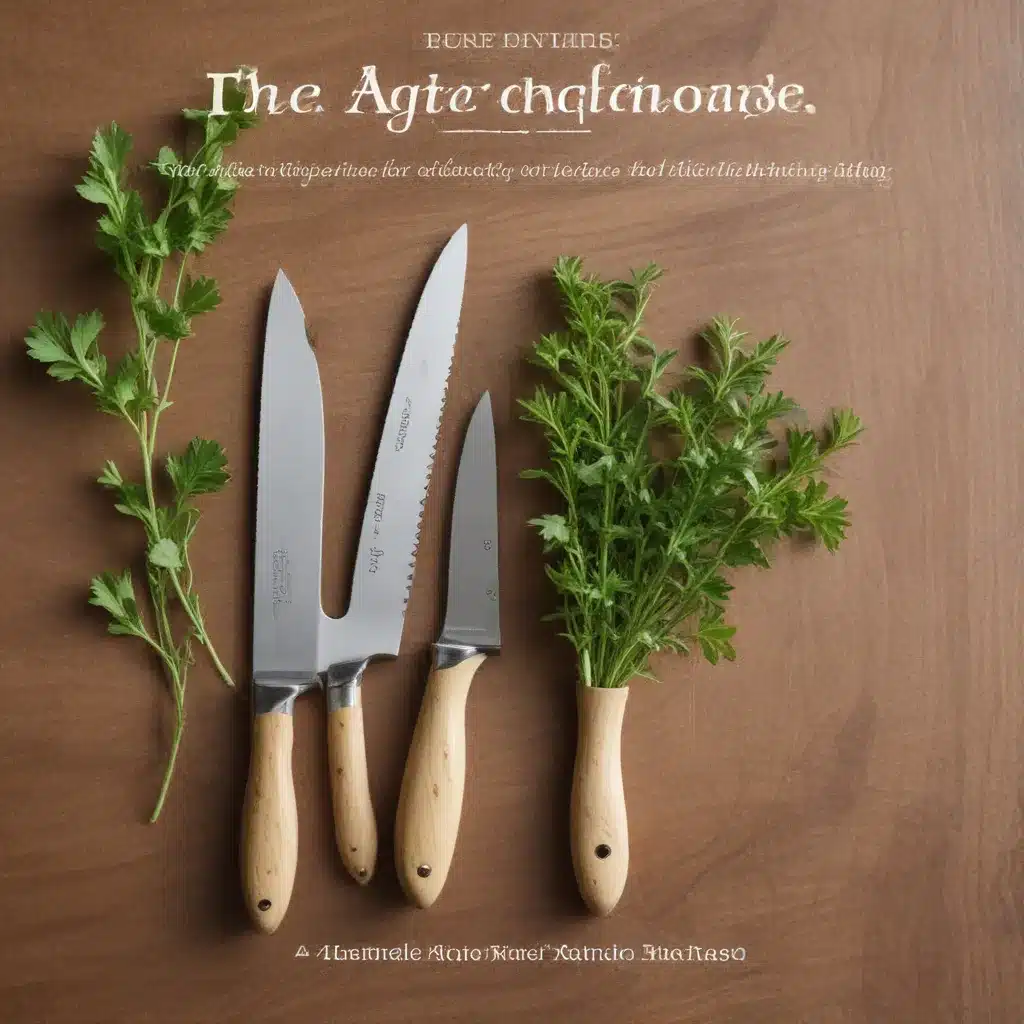
Mastering the Chiffonade Technique
As a seasoned culinary professional, I know that the art of chiffonade can elevate even the most humble dish. This delicate French cutting technique transforms leafy herbs into fine, ethereal ribbons, infusing vibrant flavor and visual appeal to your culinary creations. Whether you’re garnishing a steaming bowl of soup, topping a fresh salad, or adding the finishing touch to a pasta dish, the chiffonade is an essential skill every home cook and professional chef should have in their repertoire.
In this comprehensive guide, we’ll dive deep into the world of chiffonade, exploring the best knives and tools for the job, step-by-step instructions, and expert tips to help you master this versatile cutting method. By the end, you’ll be slicing and shredding herbs with the precision and finesse of a Michelin-starred chef.
Selecting the Right Knife for Chiffonade
The foundation of a perfect chiffonade lies in the knife you choose. While you can certainly chiffonade with a standard chef’s knife, a dedicated paring knife or utility knife will provide more control and precision for this delicate task.
Look for a knife with a sharp, thin blade that glides effortlessly through tender herbs. A high-quality paring knife is an excellent choice, as the smaller size and agile blade allow you to make clean, uniform cuts. Avoid serrated knives, as the uneven edge can tear and bruise the leaves.
As mentioned in the Chef Hire article, it’s also important to consider the knife’s balance and how it feels in your hand. The ideal chiffonade knife should be well-balanced, with a comfortable grip that allows for maximum control and dexterity.
Preparing the Herbs
Before you begin the chiffonade process, it’s crucial to properly prepare your herbs. Gently rinse the leaves under cool running water, then pat them dry with a clean paper towel or kitchen cloth. This step ensures the leaves are free of any dirt or debris that could compromise the cutting.
If working with larger, sturdier herbs like basil or sage, you may want to remove the tough stems. Simply pinch the base of the leaf and gently pull the leaf away from the stem. For more delicate herbs like mint or cilantro, the stems can be left intact.
Once your herbs are clean and prepped, it’s time to get cutting!
The Chiffonade Technique
-
Stack the Leaves: Gather a small bundle of the herb leaves and stack them neatly, aligning the edges. For basil or similar large leaves, stack 8-10 leaves at a time. Smaller herbs like mint or cilantro may only require 4-6 leaves per stack.
-
Roll the Leaves: Carefully roll the stacked leaves into a tight cigar shape, starting from the stem end and working towards the tips.
-
Slice the Roll: Using your sharp paring knife or utility knife, make thin, even slices across the rolled leaves, creating delicate ribbons or shreds. Apply gentle pressure and make clean, fluid cuts to avoid tearing the leaves.
-
Fan Out the Chiffonade: Once sliced, gently fan out the chiffonade to separate the ribbons. This will create a beautiful, uniform presentation for your dish.
Remember, the key to a successful chiffonade is to work slowly and with precision. Don’t rush the process, as that can lead to uneven, ragged cuts. Take your time and focus on maintaining a steady, controlled slicing motion.
Practical Applications of Chiffonade
The chiffonade technique is incredibly versatile, and you can use it to add flavor and visual interest to a wide variety of dishes. Here are some ideas to inspire your culinary creativity:
- Garnishes: Sprinkle chiffonade basil, mint, or cilantro over soups, salads, pasta dishes, or even cocktails for a fresh, vibrant finish.
- Pesto and Sauces: Incorporate chiffonade herbs into homemade pesto, chimichurri, or other sauces to infuse them with delicate, aromatic flavor.
- Salads and Wraps: Use chiffonade lettuce, kale, or spinach to create visually stunning salads or to add texture and crunch to wraps and sandwiches.
- Infused Oils and Vinegars: Layer chiffonade herbs into bottles of olive oil or vinegar to create custom, flavor-infused condiments.
The possibilities are endless, so don’t be afraid to experiment and find new ways to showcase your chiffonade mastery!
Maintaining Your Cutting Tools
As mentioned in the Mia’s Cucina article, keeping your knives sharp and well-maintained is crucial for achieving the perfect chiffonade. A dull blade will tear and bruise the delicate herb leaves, resulting in an unsightly and unappetizing presentation.
Invest in a high-quality sharpening stone or honing steel and learn how to properly sharpen and hone your knives. This will not only ensure your blades are always ready for action but will also extend the life of your cutting tools.
Additionally, be sure to clean your knives immediately after use, drying them thoroughly to prevent rust or corrosion. Proper knife care will keep your tools in top condition, allowing you to create flawless chiffonade time and time again.
Embracing the Art of the Chiffonade
Mastering the chiffonade technique is a journey, but the rewards are well worth the effort. By learning this essential skill, you’ll unlock a world of culinary possibilities, elevating even the simplest dishes with a touch of elegance and flavor.
Remember, the key to success is practice, patience, and a commitment to perfecting your knife skills. Start with easier herbs like basil or mint, and gradually work your way up to more challenging greens. With each chiffonade you create, you’ll gain confidence and dexterity, ultimately transforming into a true kitchen warrior.
So, sharpen your knives, gather your herbs, and let’s dive into the art of the chiffonade together. Your culinary creations are about to reach new heights of flavor and presentation. Happy cutting!


